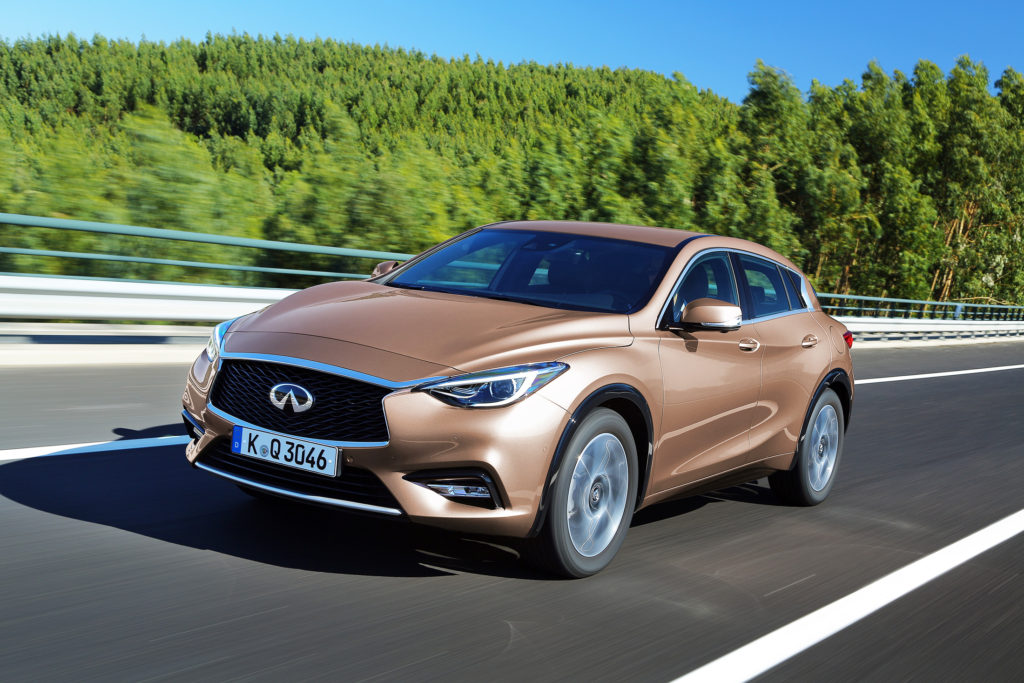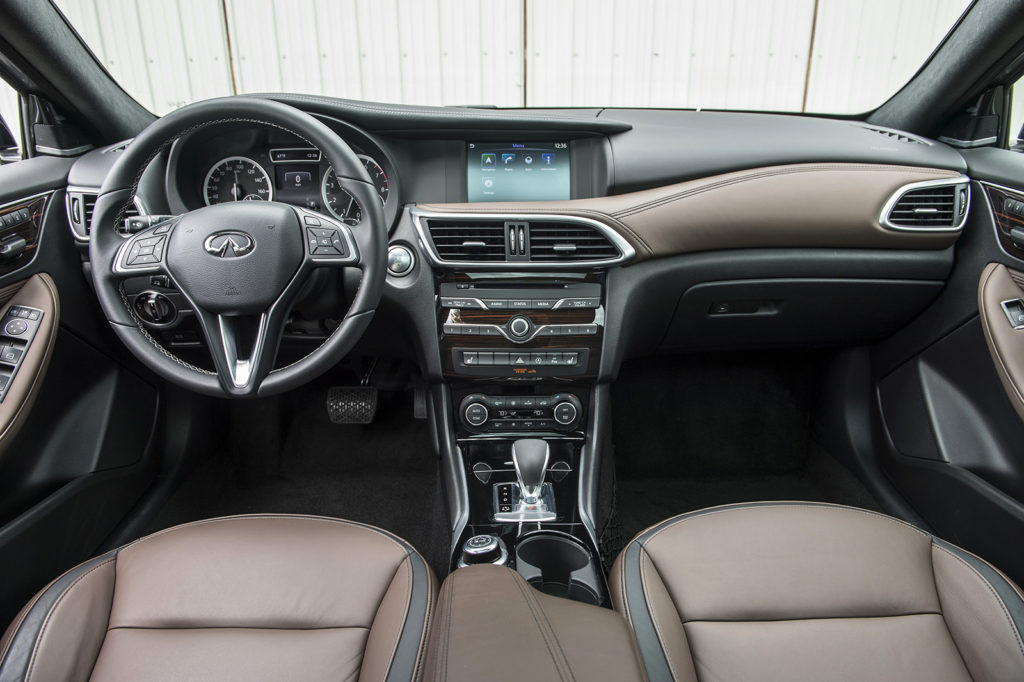Cargazing
By Derek Price
Infiniti is addressing my biggest gripe about crossover vehicles — the fact that they all seem to look alike, each just as somniferous as the next — with the dramatically styled QX30.
Granted, my view may not be widely shared. Boring compact crossovers continue to sell like opioids in Appalachia, despite the fact that every time I take a look at one I want to take a four-hour nap.
The QX30, though, is a massive does of automotive caffeine. Just a whiff of its undulating body panels makes me perk up.
Granted, styling is far and away this vehicle’s best selling point. In a category that continues to drown in research-and-development dollars, with huge companies across Asia, North America and Europe cranking out consistently impressive products, buyers can be picky and get the exact flavor of vehicle they’re looking for.
Cheap-feeling, plastic interiors? I dare you to find one in a $30,000 crossover. They just don’t exist anymore in a category that features non-stop gladiatorial competition where weak vehicles end up in lions’ bellies overnight.
Noisy rides? Gas guzzlers? Ugly grilles and tacky body cladding? The lions of competition ate those, too.

Dramatic curves on the Infiniti QX30 help it stand out from the competition. The QX30 a compact luxury crossover that starts under $30,000, a hotly contested market.
The QX30, then, has to find some way to stand out against a backdrop of brilliantly engineered competitors, and it picks innovative and eye-catching design as its chief weapon.
“Dynamic” is an overused automotive buzzword this year, but it seems fitting for a vehicle with body lines that flow like water. The whole vehicle seems to have a liquid appearance, like waves frozen in time, with thoughtfully sculpted curves and scooped-out recesses where other crossovers utilize slab-sided sheepishness.
I love that fact that the QX30 looks different and is a distinctive Infiniti design, much like Cadillac tail fins in the 1950s. Nobody but Cadillac did tail fins quite like that, and no one but Infiniti does liquified-looking body panels in quite the same way today. That’s unusual in a copycat world.
The interior has a similar departure from the norm.
Today’s new cars generally feature interiors inspired by Scandinavian minimalism, with horizontal lines that look like they were drawn using yardsticks. Some of the worst offenders look downright Soviet in their lack of ornamentation.
The QX30, in contrast, looks like it was drawn by an art nouveau enthusiast, with curves and embellishments sprinkled liberally around the cabin. You can tell some smart designers had fun with it.

The QX30’s cabin features a curvilinear motif that departs from the straight lines and minimalist styling of most new cars today. It makes a bold and eye-catching statement, both inside and out.
Performance from the 2.0-liter four-cylinder engine is good but not spectacular, with 208 horsepower on tap. Millennials will be happy to note that it’s turbocharged, helping it deliver meaningful power while still achieving a decent 30-mpg fuel economy rating on the highway even with all-wheel drive.
I was more impressed with the seven-speed dual-clutch transmission in my test vehicle.
While dual-clutch gearboxes are known for making precise, inspiring, mind-blowingly quick shifts for enthusiasts like me, they’re also known for being clunky and cantankerous at times. This one, though, feels as predictable and smooth operating as any conventional automatic. It’s some seriously impressive engineering work and offers all the rationale you need to buy the Infiniti vehicle over its cheaper cousins at the Nissan dealer, if you’ve got the money.
Speaking of which, basic pricing for the QX30 starts at $29,950 and ranges up to $37,700 for the Premium AWD trim, before you add optional packages.
At A Glance
What was tested?
2018 Infiniti QX30 Premium AWD ($37,700). Options:Cafe teak theme package ($1,750), technology package ($2,200), LED package ($1,000), navigation package ($1,850), illuminated kick plates ($465), premium paint ($500). Price as tested (including $995 destination charge): $46,460
Wheelbase: 106.3 in.
Length: 174.2 in.
Width: 82 in.
Height: 59.4 in.
Engine: 2.0-liter turbocharged four cylinder (208 hp, 258 ft. lbs.)
Transmission: Seven-speed automatic
Fuel economy: 21 city, 30 highway
RATINGS
Style: 8
Performance: 7
Price: 7
Handling: 8
Ride: 7
Comfort: 7
Quality: 8
Overall: 7
Why buy it?
It has attractive curves that catch your eye, especially compared to the dull or odd looking competition in this segment.
